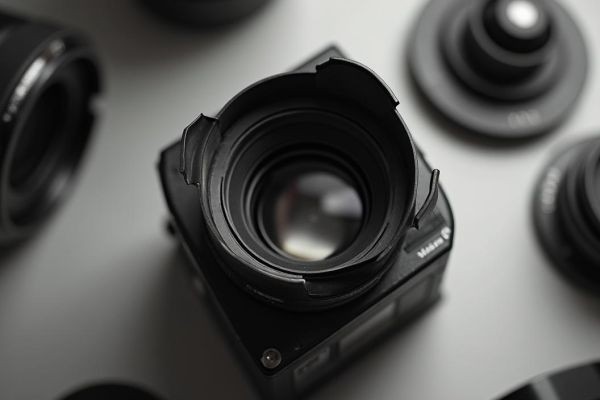Imagine your vision system missing critical details because of motion blur. Or, worse, producing inconsistent data that costs you time and money. In industries where accuracy and speed are essential, a camera with the wrong type of shutter can be a hidden bottleneck. Enter the Global Shutter Camera—a revolutionary technology that eliminates motion blur, ensuring your machine vision systems perform flawlessly. But what makes this camera a game-changer? And how does it address the pain points you've been grappling with for so long? Let’s dive in.
What Is a Global Shutter Camera, and Why Does It Matter?
Unlike traditional rolling shutter cameras, where image capture happens line by line, Global Shutter Cameras capture the entire frame at once. This synchronized image acquisition eliminates distortion caused by moving objects, making it indispensable for applications like industrial automation, robotics, and quality control.
Key Features of Global Shutter Cameras:
-
Zero Motion Blur: Perfect for high-speed operations.
-
Precise Image Capture: Ensures consistent quality across frames.
-
Versatile Applications: Ideal for robotics, autonomous vehicles, and industrial inspection.
But these features aren't just buzzwords—they directly address pain points machine vision users face daily.
Addressing the Pain Points: Why Choose a Global Shutter Camera?
1. Eliminating Motion Blur: No More Missed Details
In fast-moving environments like conveyor belt inspections or autonomous navigation, even the slightest motion blur can lead to misidentifications or missed defects. Traditional rolling shutter cameras often fall short, but a global shutter ensures every pixel is captured simultaneously, preserving image integrity.
2. Improving Efficiency: Speed Meets Precision
Global shutter cameras excel in high-speed environments, ensuring that no time is wasted on reprocessing blurred or distorted images. For industries relying on split-second decisions—such as robotic pick-and-place operations—this can mean significant time and cost savings.
3. Handling Challenging Lighting Conditions
Even in poorly lit or high-contrast scenarios, global shutter cameras deliver consistent results. This reliability eliminates the need for excessive post-processing, giving teams more time to focus on innovation rather than correction.
4. Scalability in Industrial Applications
Whether it’s automotive assembly lines or semiconductor inspections, global shutter cameras adapt seamlessly. Their ability to capture accurate data under diverse conditions makes them a long-term investment for scalable machine vision systems.
Applications Where Global Shutter Cameras Shine
1. Robotics
In robotics, precision is everything. A robotic arm sorting items on a conveyor belt relies on cameras to identify, position, and manipulate objects in real time. Motion blur or image inconsistencies can throw off the entire operation. A global shutter ensures that every movement is based on accurate visual data.
2. Autonomous Vehicles
From drones to self-driving cars, autonomous systems need clear visuals to navigate safely. With global shutter cameras, you can achieve real-time obstacle detection and motion tracking without compromising image quality.
3. Manufacturing and Quality Control
Inspections require sharp, undistorted images to detect defects. A rolling shutter might blur fast-moving parts, but a global shutter captures every detail, helping manufacturers meet stringent quality standards.
4. High-Speed Imaging
Applications like scientific research, sports analytics, and surveillance demand high-speed, high-precision imaging. Global shutter cameras excel in capturing crisp, distortion-free visuals in such environments.
Choosing the Right Global Shutter Camera
Selecting the right global shutter camera for your needs involves understanding your system requirements. Here are some factors to consider:
-
Resolution: Higher resolution is critical for detailed inspections.
-
Frame Rate: Choose a camera that matches your application's speed demands.
-
Sensor Type: Advanced sensors like CMOS with global shutter capabilities offer better performance.
-
Connectivity: Ensure compatibility with your existing system, whether it's USB, Ethernet, or other protocols.
Why Now Is the Time to Upgrade
Sticking with outdated technology can cost more in the long run. Global shutter cameras represent not just an upgrade but a transformation for your machine vision systems. They help you:
-
Save costs on error correction.
-
Reduce downtime caused by faulty inspections.
-
Scale operations without compromising accuracy.
Investing in a global shutter camera isn't just about staying competitive—it's about redefining what's possible in machine vision.
See the Difference for Yourself
Ready to eliminate motion blur and elevate your machine vision systems? Explore our range of Global Shutter Cameras tailored for industrial, robotics, and research applications.
Check out our collection of advanced Global Shutter Cameras here.

